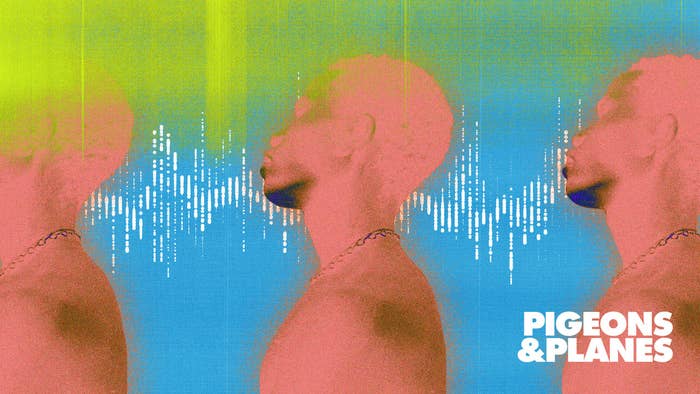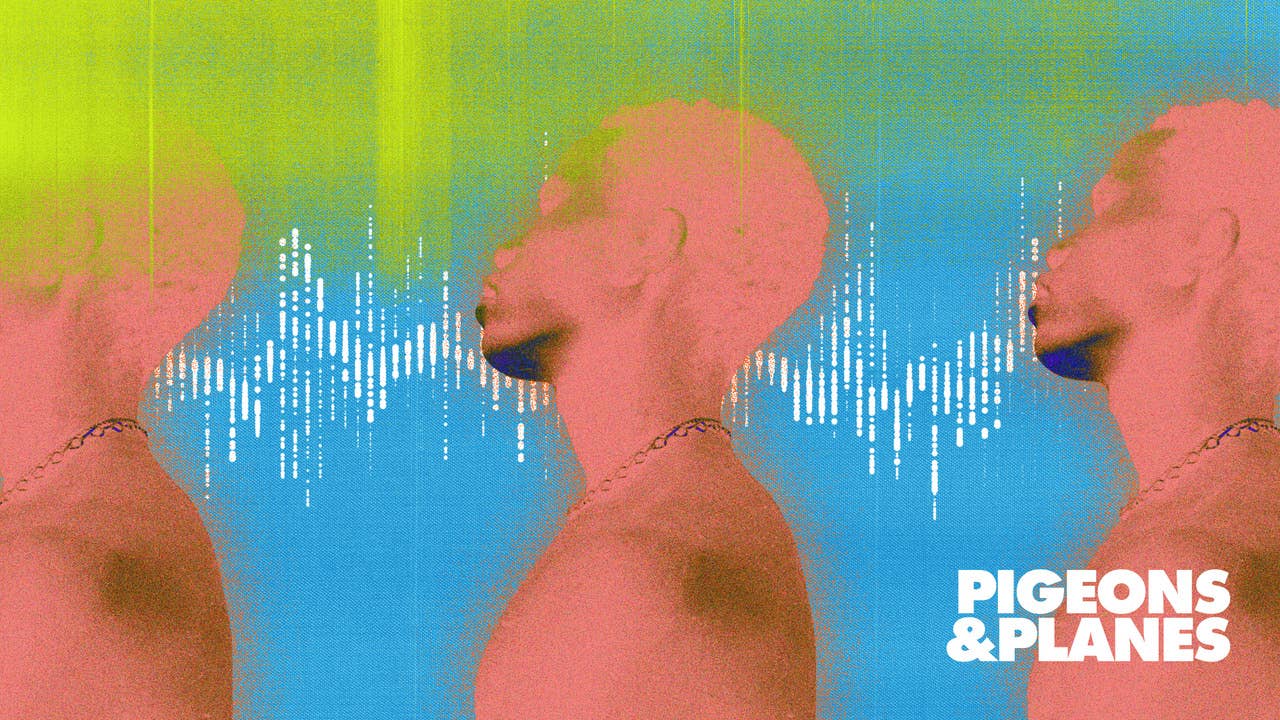
In 1977, Grandmaster Flash was 19 years old. He was the head of Grandmaster Flash & the 3 MCs which included Keef Cowboy, Melle Mel, and The Kidd Creole who were all younger than him. They were some of hip-hop’s early elite level emcees (the term coming from “Master of Ceremony” coined by Melle Mel) who established that the genre and culture emanates from the voices of the youth. Nearly four and a half decades later, being a successful teenage rapper comes with its own share of stresses that separates it from any other time in the genre’s history.
Being a teenage rapper has, perhaps, never been harder. Even though hip-hop’s fathers were almost universally teenagers, the term “Teenage rap” became associated with the friendly image of young rap artists like Bow Wow and Lil Romeo, who became heartthrobs in the early 2000s. Bow Wow’s debut album, Beware of Dog, dropped when he was 14 years old and went triple platinum. Lil Romeo’s self-titled 2001 debut went gold in just three weeks. Both artists worked a style that many still subconsciously hold teen rappers to: juvenile, world-building raps that bank on being adorable.
But in today’s reality, these ideals don’t hold up. It’s a very different game where artists, no matter the age, deal in explicit rhymes reflective of their experiences and the pressures of modern life. 17-year-old Memphis, TN rapper NLE Choppa’s breakout hit “Shotta Flow” finds him comparing extended magazine clips to the length of ropes, warning people not to point fingers at him, and more. In addition to constantly maintaining a presence online to remain relevant, teen artists today face constant scrutiny of what they say and how they act, both online and in real life.
“We've gone through anywhere between five to seven different micro generations before we've gotten to now,” hip-hop journalist Dart Adams says over the phone. “Technology is different. The way people receive information is different. The way the art is disseminated to people is different.”
Since releasing “Shotta Flow,” NLE Choppa has become one of the biggest teen rappers in the game, reportedly sparking a multi-million dollar bidding war before deciding to partner with Warner in a joint venture that includes his own label imprint called No Love Entertainment. He’s released a new project, Cottonwood, and new songs such as “Walk Em Down” with Roddy Ricch, and has become known for his online presence—something that has become integral to his career so far. “I stay visible online because that’s where my fans are,” NLE Choppa says. “I use Twitter mostly, and then whenever I just want to preview some new music that I record, I take to Snapchat or TikTok.”
Perhaps the biggest changing factor in hip-hop—and popular music in general—is the advent of social media in creating careers. Doug Life, the General Manager of Heir Wave Music Group, Pusha T’s new record label that focuses on talent in Virginia, believes that today’s scene for teen rappers is largely inspired by these new platforms. “Years ago, the record label controlled every step that artists took,” he says. “Now, there are more platforms and other ways to get exposure. Just ten to fifteen years ago, artists still had to do full rollouts that involved promotions, artworks, and visuals. Now, you can just put a song out on TikTok and it could run for three months, just off the strength of a hashtag and dance.”
24-year-old rapper Bby Goyard, who began rapping as a teenager, has seen the impact of TikTok up close. “It brought teen rappers from a level one to a level five,” he says. “A 16-year-old rapper could make a one-minute long song, post it on TikTok and get influencers to post about it, and blow up immediately,” he says. “It’s a huge platform for younger artists to go to the next step.”
But just as these digital platforms help launch rap careers for a younger generation, they can also complicate their lives in the form of ease-of-access. 18-year-old rapper Teejayx6 was recently in a supermarket with his son when someone approached him, while on Instagram Live, to try and slap him.
According to Virginia-rapper Kahri 1K, a 20-year-old signee to Heir Wave Music Group, this is now what happens to young rappers because of social media. “These platforms influence and amplify hate for teenage artists,” he says. “They make people do things so that they can amplify their own situations. You have to tread lightly and move the right way throughout your career, but, at the end of the day, you’re always going to have people out here that hate you.”
Wiki, a 26-year-old rapper who emerged as a teen, also points to the pressure of being in the digital world as a negative influence on younger rappers. “I started rapping in 2011, before social media really kicked off,” he says over the phone. “But that’s all changed. I feel the pressure [is there] for them to use Instagram and other kinds of social media to stay relevant. It’s like you have to be a part of this thing to maintain a career, which sucks as an underground artist. That shouldn’t be the norm.”
The pressure doesn’t just come from fans and social media but also from the industry itself. From seeing the deaths of peers and idols such as Juice WRLD, Pop Smoke, and Chynna Rogers, to grappling with increased responsibilities, teenage artists have much to contend with that undoubtedly takes a toll on their mental health.
None
“I try to stay positive and keep my head up right, but I really do have a lot of anxiety,” says Choppa. “Like, when I go to sleep, I’ll wake up in a cold sweat looking like I just peed on myself. There’s different problems to face every day, man.” Lourdiz, an 18-year-old singer and rapper who’s worked with G-Eazy, Swae Lee, and more, reveals over the phone that the industry is stressful for her, too. “I cope with marijuana and Planet Fitness—letting go of the bullshit and inhaling the good shit,” she says. “Whenever you start focusing on shit that you shouldn’t be focusing on, instead of just being creative and making music, shit gets mixed up and it's hard to make something great when you don’t feel great.”
With so much going on in their lives, there seems to be a reason for diaristic raps that can include extreme subject matter, but also serve as a form of therapy. Bby Goyard has seen this content change and reasons that it’s also a necessity for teen artists to keep up with the times. “That innocent shit was cool when nobody could see your whole life on the internet,” he says. “Back when Bow Wow and Lil Romeo were doing it, they had kid images, appearing on Nickelodeon and Disney shows. They had money and established systems behind them. Nowadays, it’s not like that.”
None
The systems that propelled Bow Wow and Romeo to household names have less power and relevance in 2020. Because of this, it’s more difficult for teen artists to maintain longevity and hold the audience’s attention. “The new kids don’t have mentors,” says Doug Life of Heir Wave Music Group. “Bow Wow, for instance, had Jermaine Dupri. Usher Raymond was brought in from LA Reid and Puff Daddy. Tevin Campbell was groomed by Quincy Jones.”
“Today’s artists come right into the spotlight,” Life continues. “Lil Nas X put out a couple of songs and then his next single, ‘Old Town Road’ just happens to be the biggest record of the year.” Wilder believes that cases like these showcase the differences between today and decades ago. “There’s no A&Rs—no bridge between the artists and the labels now,” Wilder continues. “There’s no more grooming.”
So the game’s changing—but that’s okay. For the last four decades hip-hop has constantly reinvented itself. As much as teenage rappers can blow up overnight, more artists are getting discovered or reaching new heights in their late 20s, 30s, and beyond. “The reason why we have the ageism in rap that exists now is because nobody, at the time, could envision being a 30-year-old rapper,” Dart says. “Kurtis Blow turned 25 and his career was already on the decline by 1985 and 1986. By 1988, they were pushing him off on an ice float because he was going to turn 30.”
As 2020 goes on, the voice of teenage rappers has never felt more important than in the midst of a global pandemic and protests for police reform. They may not be establishing a new genre like rap’s earliest creators, but nor are they rapping to appease a Disney audience. “The world is just different for teen rappers than it was 15 years ago,” says Bby Goyard. “It was okay to be an innocent rapper back then, but now if you’re young and making something juvenile, [fans will] see you as an artist recording a Kidz Bop album. You won’t be taken seriously. And I feel like these younger kids really want to be taken seriously.”

